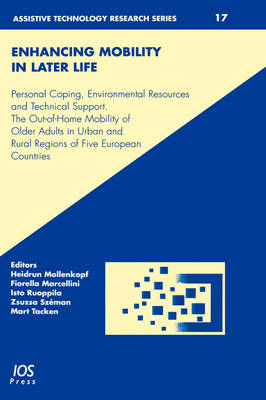Assistive Technology Research
1 total work
v. 17
Enhancing Mobility in Late Life
Published 1 October 2005
Outdoor mobility in old age is a complex phenomenon. On the one hand, it is a basic human need and means the physical ability to move. On the other, it means the realization of all types of trips out-of-doors, either by foot or by means of transportation. In addition, societal and individual necessities, modern values and economic interests mutually reinforcing each other have resulted in mobility as an ever more important precondition of ensuring the ability to lead an autonomous life and participate actively in society according to one's individual needs. Mobility also promotes healthy ageing, delays the onset of disabilities, and postpones frailty, thereby contributing to subjective well-being and life satisfaction. With advancing age, however, maintaining mobility may become jeopardized because of the increasing risk of physical and sensory impairments.This book includes information on older people's actual out-of-home mobility, on the transportation tools used, the prevalence of typical problems associated with out-of-home mobility, the impact of health, social networks, the home and neighbourhood environments, and psychological aspects on their mobility and activities, differences between urban and non-urban areas, and age and gender differences.
In addition, a new model of mobility is suggested and the relation between mobility and quality of life is analysed. The book concludes with implications for social and transport policies, urban planning, and industrial pursuits for meeting the mobility needs of ageing adults.
In addition, a new model of mobility is suggested and the relation between mobility and quality of life is analysed. The book concludes with implications for social and transport policies, urban planning, and industrial pursuits for meeting the mobility needs of ageing adults.
